Preparation of HMX/TATB spherical composite explosive by droplet microfluidic technology
Bidong Wu , Jinqing Zhou , Yunyn Guo , Rui Zhu , Dong Wng , Chongwei An ,Jingyu Wng
a School of Environmental and Safety Engineering,Shanxi Engineering Technology Research Center for Ultrafine Powder,North University of China,030051,Taiyuan, Shanxi, China
b ShanXi JiangYang XingAn Civil Explosive Equipment Co.,Ltd, 030041, Taiyuan, Shanxi, China
Keywords:PBX
ABSTRACT Polymer bonded explosives(PBXs)have high energy density,excellent mechanical properties and better thermal stability. In this study, droplet microfluidic technology was used to successfully prepare HMX/TATB microspheres.The effects of different binder types and binder concentrations on the morphology of the microspheres were studied, and results proved that NC/GAP (1:4) provides particles a regular spherical morphology and good dispersion. Subsequently, the influence of the concentration of the dispersed phase and the flow rate of the continuous phase on the particle size distribution of the microspheres was fully studied. The microspheres had narrow particle size distribution and high spherical shape.Under optimized process conditions,HMX/TATB microspheres were prepared and compared with the physical mixtures. The X-ray diffraction, differential scanning calorimetry, flow properties, bulk density, and mechanical sensitivity of the samples were also studied. Results showed that the crystal form of the microspheres remains unchanged, and the binder maintains good compatibility with explosives. In addition, the fluidity, bulk density, real density and safety performance of the microspheres are remarkably better than the physical mixture. This study provides a new method for preparing PBX with narrow particle size distribution, high spherical shape, excellent dispersion and high bulk density.
1. Introduction
Composite explosives can combine the advantages of each of its components and enhance the overall performance of composite materials. Octahydro-1,3,5,7-tetranitro-1,3,5,7-tetrazine (HMX)/1,3,5-triamino-2,4,6-trinitrobenzene (TATB)-based polymer binder explosives are a typical high-energy composite material, which is widely used in military and civilian fields [1-3]. HMX has high energy and high sensitivity, whereas TATB has insensitivity and high thermal stability [4,5]. Therefore, a new type of insensitive high explosive was developed by mixing HMX and TATB in a certain ratio, thereby reducing the mechanical sensitivity of high-energy explosives while maintaining high energy [6-10]. Representatively reported insensitive high explosives (PBX-9502: 95 wt%TATB, 5 wt% Kel-F 800. RX-26-AF: 49.3 wt% HMX, 46.6 wt% TATB,4.1 wt%Estane.PBX-9503:80 wt%TATB,15 wt%HMX,5 wt%Kel-F 800) have higher loading density, better mechanical strength,better thermal stability and better performance. However, so far,the preparation of PBX modeling powder is still pure in the shortcomings of particle aggregation, poor dispersion, low coating rate and bulk density.
Spherical explosives can accurately integrate components with high specific surface area, improve the uniformity of component mixing[11].In addition,spherical materials not only improve bulk density and fluidity [12] but also retain a high and easy-to-adjust energy density, thus enhancing reaction reliability and reproducibility [13,14]. Polymer binder explosives can be produced by mechanical stirring [15], ultrasonic [16] or spray control [17]. This batch manufacturing method leads to particle size polydispersity,poor coverage, and low stability [18]. For example, water suspension granulation technology is simple and easy to batch preparation, but it has the disadvantages of poor morphology and uneven particles [19]. The size and morphology of the prepared microspheres may vary greatly due to the highly variable shear used in spray drying technology [20]. In recent years, membrane emulsification technology has been expected to improve the properties of microspheres; however, these manufacturing methods are complicated and time consuming, thus limiting their inclusion in industrial methods [21,22]. Therefore, it is very important to explore new technology to prepare PBX.
The precise flow control provided by droplet microfluidic technology provides an effective means to overcome these shortcomings. The microchannel packaging closed system generates more efficient heat and mass transfer, more stable reaction conditions, and less reagent consumption, thereby effectively avoiding cross contamination and simplifying postprocessing [23]. For example, Yan [24] et al. developed a microfluidic crystallization system(MCS)based on microscale chaotic advection to control and optimize the crystallization environment of PBXs. Based on the advantages of rapid and simple preparation of MCS, the suitable polymer coating explosive composite system can be quickly selected. Droplet microfluidic technology is the use of microchannel device can be used to generate highly monodispersed water-in-oil (W/O) or oil-in-water (O/W) microdroplets. The microspheres prepared with the droplets as a template have regular shapes,uniform particle size distribution,and high particle coating efficiency [25]. Heintz [26] developed a continuous ADN spherical granulation process through microfluidic technology,which has the advantages of high safety and mild operation conditions. The product has narrow particle size distribution, controllable particle appearance, good dispersion and difficult agglomeration. Han [12]et al.used a new droplet microfluidic technology to prepare adipic styrene(HNS)microspheres with nitrocellulose(NC)as binder.The fluidity and bulk density of HNS microspheres were significantly improved.Droplet microfluidic technology has become a powerful tool for material synthesis [27], polymer microparticles, hydrogel microparticles, core-shell particles, and microcapsules and is superior to traditional manufacturing methods [28-30]. Therefore,droplet-based microfluidic technology has broad application prospects in the preparation of composite microspheres in the field of energetic powder materials.
In this study, we developed a droplet microfluidic platform to prepare HMX/TATB microspheres. The effects of different types of binders and binder concentrations on the morphology and circularity of the microspheres were studied. The particle size distribution of the microspheres could be precisely controlled by regulating the concentration of the suspension and the flow rate of the continuous phase. In addition, the samples prepared by the ideal droplet microfluidic process were compared with those prepared by the traditional mechanical stirring method.Furthermore,the crystal morphology, thermal compatibility, fluidity, bulk density, and mechanical sensitivity of the samples were studied. The droplet microfluidic strategy provides a new method for PBX preparation and performance improvement.
2. Experimental
2.1. Material
Raw HMX and TATB (fineness of 99.7%) are provided by Gansu Yinguang Chemical Industry Group Co, Ltd. The NC(12% N, industrial grade)is produced by Foshan Junyuan Chemical Co, Ltd. GAP,number-average molecular weight (M × n = 3502), with hydroxyl value of 30.41 mg KOH g-1, was produced by Luzhou North Chemical Industry Co, Ltd (Luzhou city, Sichuan province, P. R.China). Ethyl acetate (fineness of 99.8%) and Dichloroethane (fineness of 99.8%) were produced by Tianjin Tianda Chemical Co, Ltd.Pure water is purchased from Taiyuan Iron and Steel Co, Ltd. Sodium dodecyl sulfonate (SDS) is produced by Tianjin Kaitong Chemical Reagent Co, Ltd.
2.2. Preparation of the dispersed and continuous phases
First, select the appropriate water-oil emulsion system. The oil phase was screened through experiments, and ethyl acetate (EA)solution was selected as the oil phase(The supporting material was found in the detailed experimental process).The dispersed phase is configured as 85 wt% refined HMX, 10 wt% refined TATB, 5 wt%binder,and ethyl acetate(EA),and its concentration is fixed at 50 g/L, and suspension prepared by ultrasonication at 30°C for 30 min.The detailed experimental process of refining TATB and HMX were given in Supplemental Information.
The continuous phase is configured as a 0.5% sodium dodecyl sulfonate aqueous solution, and the surfactant has a stabilizing effect on microdroplets.
2.3. Microfluidic device and composite microsphere preparation
Given the production of O/W droplets, hydrophilic glass materials are selected to process fluid focusing chips. The width and depth of the dispersed phase channel of the fluid-focused microchip are 350 and 200 μm,respectively,and the width and depth of the continuous phase channel and the cross-outlet channel are 500 and 200 μm, respectively. To reduce collision in the microchannel after droplet formation, the chip exit is designed as a straight channel(Fig.1(b)).The dispersed phase adopts an ultrasonic liquidcarrying injector to suppress suspension settlement, and the ultrasonic liquid-carrying injector is connected to an ultrasonic control device. The dispersed and continuous phases are pumped into the chip through a syringe pump, and the flow rates of the continuous and dispersed phases are 0.1 and 1.3 mL/min, respectively.The microfluid flows into the fluid-focused microchannel to form microdroplets. The liquid droplets flow into the beaker through the pipe (PTEF material) to receive the liquid. The thermostatic magnetic stirring water bath controls the temperature and stirring of the receiving liquid in the beaker (Fig. 1(a)). The temperature of the sample receiving liquid is 35°C,and the stirring speed is 60 r/min.The droplet microfluidic system consists of fluid driving unit, droplet generation unit, microsphere collection unit and connection component. The platform has the advantages of simple structure, convenient operation, high efficiency and low reagent consumption. In addition, the instrument miniaturization of the platform reduces the risk in the preparation process,and has good economic benefits and application prospects.
2.4. Characterization
The crystal structures were determined by powder X-ray diffraction (XRD, DX-2700, Dandong Haoyuan Corporation, Liaoning, China).
The surface morphology, average size and size distribution of microspheres were characterized by scanning electron microscopy(SEM, SU-8020, Hitachi, Japan).
The particle size distribution and roundness of the samples were characterized by BT-1600 image particle analysis system.
The macro morphology of the samples was characterized by an electron microscope camer.
The flowability of samples and raw materials was measured by the angle of repose method. By pouring about 1 g HMX/TATB microspheres into a funnel 5 cm high from the plane,it can freely fall and accumulate into a conical structure, and the flowability of the sample is evaluated by measuring the conical angle.
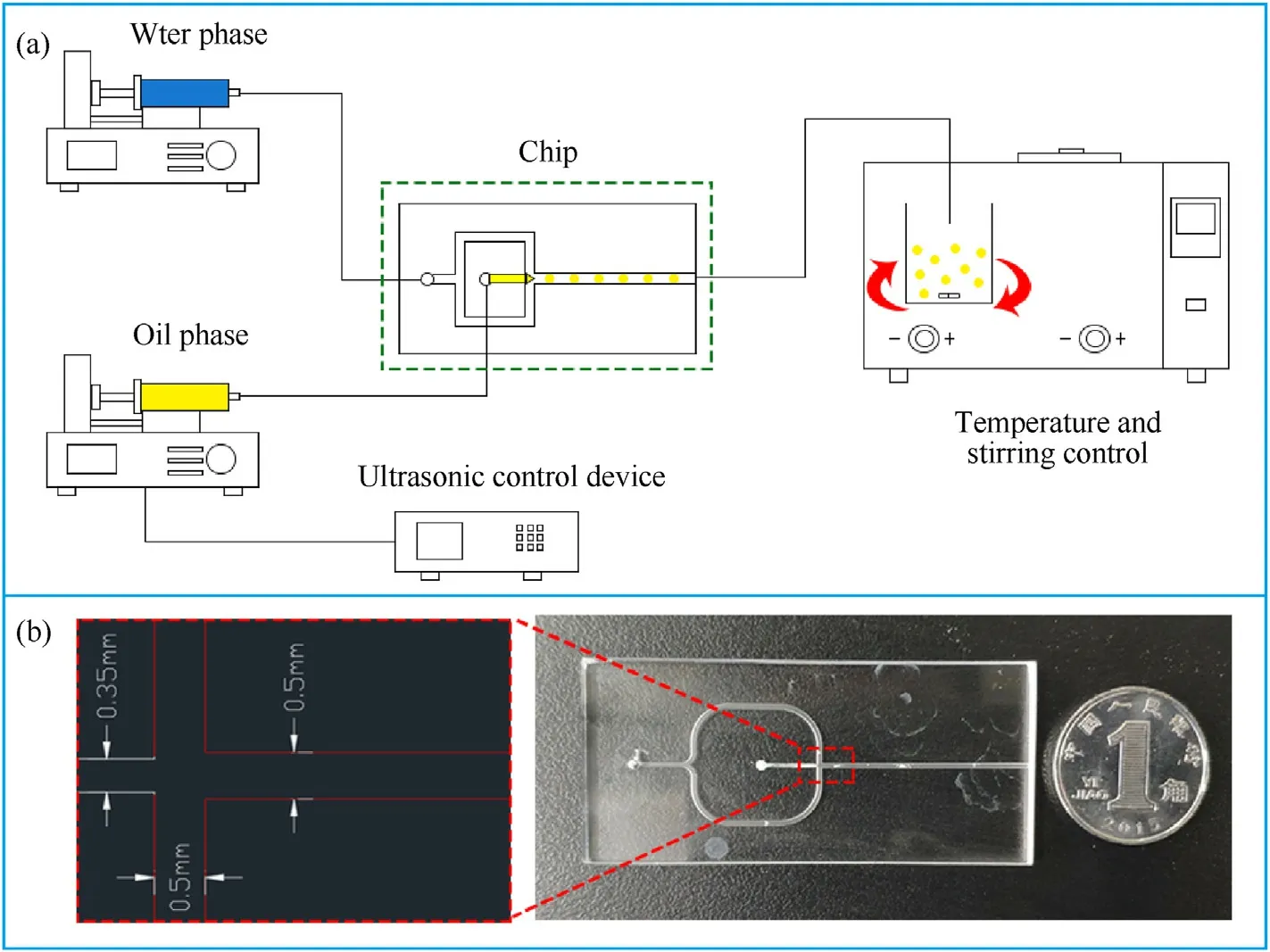
Fig.1. (a) Microfluidic device; (b) fluid-focused chip.
The bulk density of the sample was calculated according to ASTM 873 standard (test method for bulk density of high-density granular biomass fuel). The weight and volume values are as follows: The sample is poured into the hemisphere cavity with a diameter of 5 mm, and the excess samples above the hemisphere plane are removed by ruler. The weight and volume values of the hemisphere cavity samples are measured and further calculated.Measure repeated three times,calculate the average.The density is tested by densimeter.
Thermal analysis was performed on a differential scanning calorimeter (DSC-131, Setaram, France, Shanghai, China), and the heating rate was 10°C/min.
The thermal behavior of the sample was analyzed by TGA(TGA METTLER TOLEDO). The sample (1-3 mg) was placed in a 70ul ceramic crucible at a constant heating rate of 10°C/min from 50 to 400°C.
The impact sensitivity was tested with a home-built Type 12 drop hammer apparatus. The special height (H50) represents the height from which 2.500±0.002 kg drop hammer will result in an explosive event in 50%of the trials.In each determination,25 drop tests were made to calculate the H50.
3. Results and discussion
3.1. Effects of different binder types and binder concentrations on the morphology of HMX/TATB microspheres
Inorganic particles were pretreated with different binders to improve the compatibility between the inorganic particles and polymer; thus, the inorganic particles were well dispersed in the polymer matrix[31].Interfacial work could be effectively improved by introducing binders as “bridge” molecules on the surface of explosives [32,33]. HMX/TATB microspheres were prepared with 5 wt% binder NC and GAP, and the results are shown in Fig. 2. The refined HMX is granular with an average particle size of approximately 200 nm (Fig. 2(a)). The refined TATB is refined into flakes with an average particle size of approximately 80 nm (Fig. 2(b)).Microspheres prepared by 5 wt% NC (Fig. 2(c)) are similar to “red blood cells”showing a single disk shape and a few ovals.This result can be attributed to the collapse of HMX/TATB suspension droplets.The viscosity of suspension droplets is not strong enough to resist the interference caused by the aqueous solution because of the NC binder. HMX/TATB/NC microspheres have uniform particle size distribution, no agglomeration, and good monodispersity. HMX/TATB/GAP microspheres prepared by 5 wt% GAP (Fig. 2(e)) show a spherical shape, uniform particle size distribution, and good monodispersity. Fig. 2(d)-(f) show the surface of microspheres prepared by the two binders. Compared with HMX/TATB/GAP, the surface of HMX/TATB/NC prepared by NC is smoother, and HMX and TATB particles are uniformly distributed on the surface of the microspheres(Fig.2(d)).On the contrary,a large gap is found on the surface of microspheres prepared by GAP; moreover, the distribution of TATB small particles is uneven, and TATB particle agglomeration occurs, as shown in the red virtual coil in Fig. 2(f).

Fig.2. Scanning electron microscope(SEM)images of HMX/TATB microspheres prepared with different binders:(a)refined HMX;(b)refined TATB;(c),(d)and(e),(f)correspond to the microspheres and microsphere surfaces prepared by NC and GAP, respectively.
To obtain a good spherical shape of HMX/TATB microspheres and uniform explosive particle distribution, we studied the preparation of microspheres with NC/GAP composite binders of different proportions.The results are shown in Fig.3.The use of NC/GAP composite binder can not only reduce the energy loss of composite explosives but also maintain good physical properties of composite explosives[19].The NC concentration is 4 wt%(Fig.3(a)),and the microspheres still look like red blood cells; the NC concentration is 3 wt% (Fig. 3(b)), and some microspheres have a regular spherical shape. Steadily, the NC concentration is 2 wt%(Fig. 3(c)), and the microspheres have a spherical shape. Then, the NC concentration is 1 wt%, the microspheres have a regular spherical shape and uniform particle size distribution (Fig. 3(d)),and explosive particles are uniformly distributed on the surface and inside (Fig. 3(e) and (g)), Solid structure inside microspheres(Fig.3(f)).The results show that as the concentration of NC binder decreases, the spherical shape of the microspheres becomes more regular. When the NC/GAP ratio of binder is 1:4, the prepared microspheres have the most regular spherical shape, and the explosive particles are distributed on the surface of the microspheres.
A particle image analysis system was used to analyze the circularity of the microspheres,as shown in Fig.4 and Table 1.The average circularity of sample-1,sample-2,and sample-3 are 0.908,0.937, and 0.929, and the spans are 0.064, 0.042, and 0.043,respectively. Compared with that of sample-1, the average circularity of sample-2 increased by 0.029, and the span decreased by 0.022. The circularity and span of sample-2 and sample-3 are not much different.These data further illustrate that the use of the NC/GAP(1:4)composite binder to prepare microspheres has excellent circularity and narrow particle size distribution.

Table 1Circularity and span of HMX/TATB microspheres.

Table 2 Particle size of HMX/TATB microspheres prepared with different explosive concentrations.
3.2. Formation mechanism of HMX/TATB microspheres
We used microfluidics technology as a new and stable droplet generation method, using droplets as a template to prepare microspheres.The binder is dissolved in the dispersed phase,and the HMX particles and TATB particles are suspended in the dispersed phase; thus, the binder is in full contact with the explosive particles. In the fluid-focused structure, the two-phase flow is forced to pass through a “cross” integrated in the glass-based microchannel. The dispersed phase is subjected to shearing force to form highly periodic and repeatable microdroplets. The generation speed of microdroplets is fast and mainly controlled by the flow rate of the continuous phase, as shown in Fig. 5. The microdroplets contain white HMX particles and yellow TATB particles,and they are evenly distributed inside and on the surface of the droplet. Given that the EA solution is slightly soluble in water, the EA on the surface of the microdroplet in the microchannel slowly diffuses into the aqueous solution,and the binder on the surface of the droplet is supersaturated and precipitated, adsorbing surface explosive particles. Then, the microdroplets flow into the beaker,and the EA inside the microdroplets slowly diffuses to the outside and gradually solidifies into solid microspheres.

Fig. 4. Binary image of HMX/TATB microspheres prepared with different binders: (a) NC; (b) GAP; (c) NC/GAP (1:4).
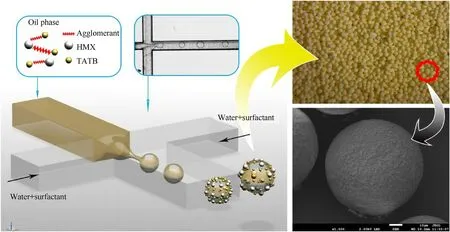
Fig. 5. Microsphere curing mechanism.

Fig. 6. HMX/TATB microspheres prepared with different explosive concentrations: (a), (b), (c) sample-4; (d), (e), (f) sample-5.
3.3. Influence of the concentration of the dispersed phase on the particle size of HMX/TATB microspheres
The HMX/TATB microspheres prepared with different dispersed phase concentrations were studied.The particle size of the sample was analyzed by the image particle analysis system, and electron microscope images were taken (the magnification was fixed at 180×). The results are shown in Fig.6 and Table 2.The change in the concentration of the dispersed phase affects the particle size of the microspheres, and the high concentration of the dispersed phase leads to a larger particle size of the microspheres (Fig. 6 (b)and 6(e)).When the concentration of the dispersed phase is 75 g/L,the suspension in the syringe becomes more yellowish (Fig. 6(a))with the increase in TATB content. Sample-4 has good spherical shape and monodispersity (Fig. 6(b)); the largest particle size is 79.81 μm, the smallest particle size is 50.27 μm, and the D50is 63.69. However, during the experiment, the concentration of the suspension is too large, easily causing the microchannel to be blocked. When the concentration of the dispersed phase is 25 g/L,the color of the suspension in the syringe becomes lighter,and the layer of explosive particles and the oil phase appears at the red arrow (Fig. 6(c)). Therefore, a carrier liquid ultrasonic injector,which can effectively prevent the suspension from settling and prevent the uneven concentration of explosives in each droplet,must be used during the experiment.The particle size of sample-5 is significantly reduced (Fig. 6(d)); the maximum particle size is 59.06 μm, the minimum particle size is 31.33 μm, and the D50is 47.46 μm. These data show that under the same dispersed phase and continuous phase flow rate, the microspheres prepared with high dispersed-phase concentration have a large particle size, and the microspheres prepared with low dispersed-phase concentration have a small particle size. During the experiment, we chose a dispersed-phase concentration of 50 g/L to prepare microspheres,considering the problem of suspension sedimentation and microchannel clogging.
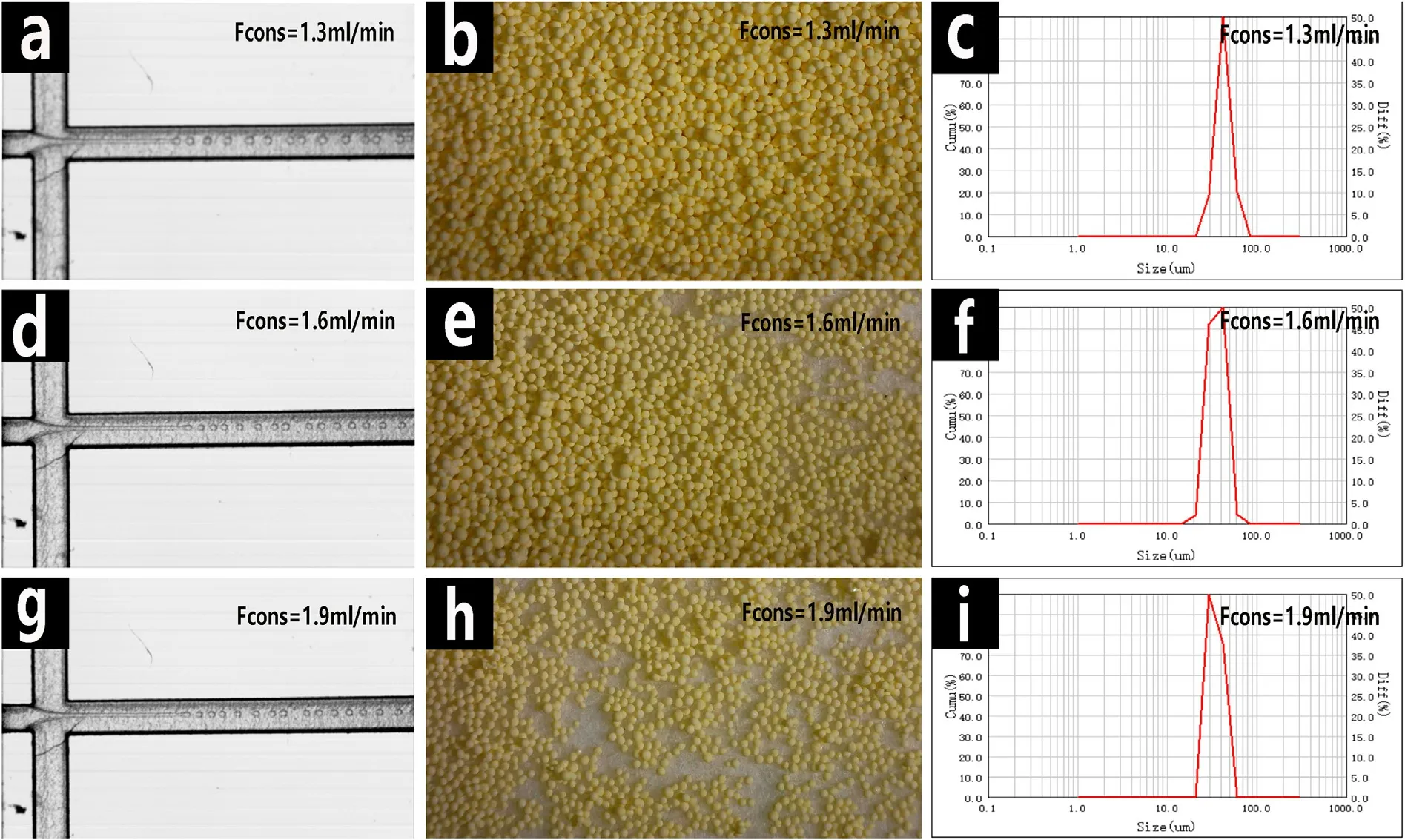
Fig. 7. Preparation of samples with different continuous phase flow rates: (a)-(c) microspheres prepared with continuous phase flow rates of 1.3 mL/min; (d)-(f) microspheres prepared with continuous phase flow rates of 1.6 mL/min; (g)-(i) microspheres prepared with continuous phase flow rates of 1.9 mL/min.
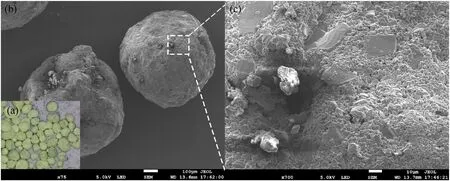
Fig. 8. (a) S-2 of microscope images; (b) SEM images; (c) SEM local magnification images.

Fig. 9. X-ray diffraction (XRD) patterns of raw materials and samples.

Table 3 Particle size of HMX/TATB microspheres prepared with different continuous phase flow rates.
3.4. Influence of the flow rate of the dispersed phase on the particle size of HMX/TATB microspheres
A key factor affecting the droplet size is the force between the continuous and dispersed phases. The effects of different continuous phase flow rates on the particle size of microspheres were studied. Sample-6, sample-7, and sample-8 were prepared, as shown in Fig. 7 and Table 3. The images of droplet formation in microchannels (Fig. 7(a), (d), and 7(g)) were taken by high-speed photography. The microchannel shows that the droplet formation is jet type [31], and the droplet with a uniform diameter is spontaneously formed in the cross flow of two immiscible liquids.As the continuous phase flow increases, the diameter and spacing of the droplets decrease (Fig. 7(g)). Samples 6-8 (Fig. 7(b), (e), and (h))were photographed by an electron microscope (multiple fixed 180 × ), and the samples kept their regular spherical shape. With the increase in continuous phase flow,the size of the microspheres decreases gradually. The D50of samples 6-8 are 40.26, 35.51, and 33.68 μm;the maximum particle size is 60.73,52.34,and 50.79 μm;and the minimum particle size is 31.78, 21.20, and 18.01 μm,respectively.The average particle size,maximum particle size,and minimum particle size of the microspheres decrease with the increase in continuous phase flow rate;this result is consistent with the high-speed photography of the droplet image. The span of samples 6-8 is approximately 0.36 ± 0.01, indicating that the samples have a narrow particle size distribution.In 2017,our team used the spray drying method to prepare HMX/NC/GAP [19] microspheres with a particle size range of 200-1500 μm, indicating that the droplet microfluidic method has great advantages in preparing microspheres with a narrow particle size distribution.Therefore,the droplet microfluidic method can prepare HMX/TATB microspheres with controllable particle size by regulating the continuous phase flow rate.
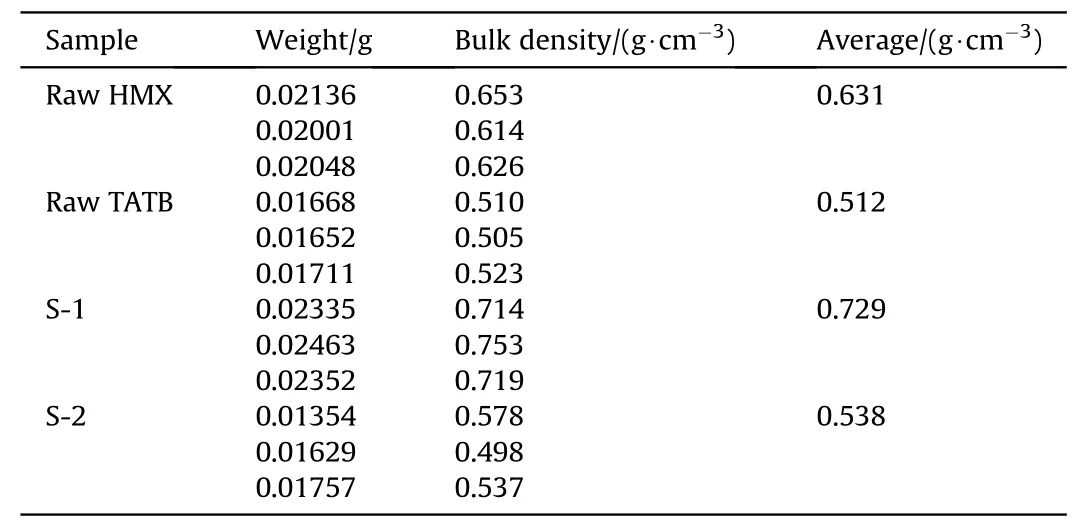
Table 4 Bulk density of raw materials and samples.
3.5. Performance characterization of HMX/TATB microspheres
On the basis of the above results, ideal conditions (suspension concentration of 50 g/L,85 wt%refined HMX,10 wt%refined TATB,1 wt% NC, 4 wt% GAP composite binder, Vdis= 0.1 mL/min,Vcon=1.3 mL/min)were selected to prepare microspheres,and the sample was named S-1. For further comparison, a traditional physical mixture[34]was used to prepare a composite HMX/TATB containing the same binder composition and explosive ratio, and the sample was named S-2. As shown in Fig. 8, the S-2 sample prepared by traditional mechanical stirring had uneven particle size,irregular particle shape(Fig.8(a))and uneven surface(Fig.8(b)and (c)).
3.5.1. X-ray diffraction analysis
The raw materials and samples were characterized by X-ray diffraction (XRD), and the results are shown in Fig. 9. The XRD patterns of the original HMX, refined HMX, S-1, and S-2 show several typical diffraction peaks at 14.781, 16.178, 21.329, and 32.170, indicating that the crystal form of HMX in S-1 and S-2 did not change. The typical diffraction peaks of the refined TATB at 28.152 and 42.532 are consistent with the raw material TATB, and the crystal form of the refined TATB is unchanged. The diffraction peaks of S-1 and S-2 at 28.25 and 28.35 are consistent with the typical diffraction peaks of the raw material TATB.The results show that the microspheres prepared by the droplet microfluidic method kept the crystal form unchanged.
3.5.2. Flowability characterization
The flow ability of raw materials and samples was analyzed by the angle of repose[35,36].An angle of repose below 30°indicates good fluidity. An angle of repose of 30°-45°has certain viscosity,and an angle of repose of 45°-55°is viscous[37].One gram of raw materials and samples was poured at a height of 5 cm to measure the angle of the natural pile(Fig.10).The angle of repose of the raw HMX, raw TATB, S-1, and S-2 is 48.5°, 48.7°, 25.7°, and 40.5°,respectively. These data show that the HMX/TATB microspheres prepared by the droplet microfluidic method have excellent dispersion,and the dispersion is significantly better than that of the raw materials and physical mixtures.

Fig.10. Angle of repose of the raw materials and the samples.
3.5.3. Bulk density and real density characterization
The bulk density of the raw materials and samples were measured in accordance with ASTM873(the test method of density pellet biomass fuel bulk density)[38,39],and the results are shown in Table 4.The average bulk density of S-1 is 0.729 g/cm3,which is significantly higher than that of the raw materials and S-2. The average bulk density of S-2 is 0.538 g/cm3,which is lower than that of the raw material HMX. This result may be due to the uneven particle size of the mechanically stirred composite,resulting in low bulk density. The results show that the preparation of spherical composite explosives by the microfluidic method increases the bulk density.In addition,the real density of the sample was tested by a densimeter(all tested three times).The average real densities of S-1 and S-2 were 1.925 g/cm3and 1.641 g/cm3, respectively.
3.5.4. Differential scanning calorimetry analysis
Differential scanning calorimetry (DSC) was used to study the raw materials and samples (heating rate: 10°C/min), as shown in Fig.11.The raw HMX,S-1,and S-2 have endothermic peaks around 190°C and 275°C, respectively, which are caused by the phase transition and melting point of HMX.The DSC curves of S-1 and S-2 have exothermic peaks at 286.5°C and 286.2°C,respectively,which are consistent with the exothermic peaks of raw HMX (287.7°C),indicating that NC and GAP binders are compatible with HMX.Given the thermal decomposition of TATB,a single exothermic peak appears in the DSC curve of TATB at 385.4°C.The DSC curves of S-1 and S-2 detected TATB exothermic peaks at around 360°C (as shown in Fig.11 (b)). This phenomenon may occur because HMX and TATB exist independently of each other in the composite material, and thermal decomposition promotes each other [40].Compared with that of S-2, the TATB exothermic peak of S-1 is 3.1°C earlier. This result may be attributed to the smaller particle size of the refined TATB in S-1 and the increase in specific surface area, which requires less heat to decompose TATB.
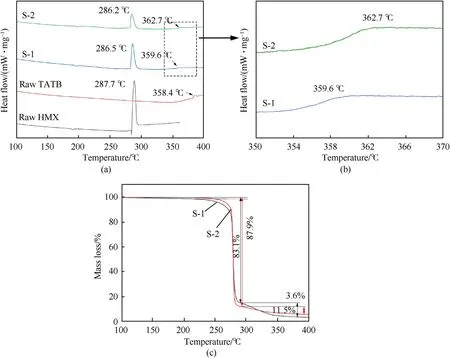
Fig.11. (a) Differential scanning calorimetry (DSC) curves of raw materials and samples; (b) S-1and S-2 local amplification DSC curves; (c) TG curves of samples.
Fig. 11(c) shows the TG curve of the sample. From 200°C to 290°C,the mass of S-1 decreased sharply,which was caused by the decomposition of GAP, NC and HMX. The loss was about 87.9%,which was close to the content of HMX,GAP and NC in the sample(90%).With the increase of temperature,from 290°C to 400°C,the mass loss of S-1 was about 6.3%. This is due to the thermal decomposition of TATB in the sample. Finally, the residual mass of S-1 at 400°C is about 96%.By contrast,the same proportion of S-2 samples (mechanical stirring method), from 200°C to 400°C appear two mass loss steps,respectively,about 83.1%and 11.5%.The data show that the mass loss of the first stage (decomposition of HMX,GAP and NC)is significantly reduced,and the mass loss of the second stage (TATB) is increased. The results showed that the content of each substance in S-2 was not consistent with the original ratio. Finally, the residual mass of S-2 at 400°C is about 95%.
3.5.5. Sensitivity analysis of raw materials and samples
An impact sensitivity test was conducted on the samples and raw materials, and the results are shown in Fig.12. The characteristic drop height(H50)of the samples is higher than that of the raw HMX (H50is 25.4 cm) probably because the binders NC and GAP effectively absorb and disperse energy under impact stimulation.The characteristic drop height of S-1 is greater than 100 cm, indicating that the safety performance is significantly improved. This result is obtained probably because the coatings of NC and GAP binders on the surface of the HMX particles of S-1 are compact,and the TATB particles are uniformly distributed inside and on the surface of the microspheres. When S-1 experiences an external impact, the adhesive and TATB particles act as a buffer system to dissipate the impact energy, thereby reducing the stress concentration between explosive particles and effectively preventing the formation of hot spots[41].In addition,HMX and TATB are refined to prepare HMX/TATB microspheres.The smaller the particle size of the explosive, the more difficult it is to ignite the explosive; however, once it is ignited, the faster the detonation increases [42].However, the H50of mechanically stirred sample S-2 was 59.6 cm,and the impact sensitivity was much higher than that of S-1. This may be due to the uneven size of S-2 particles (Fig. 8(a)) and the uneven size of voids formed by accumulation.These small voids are adiabatically compressed, resulting in a rapid increase in temperature within the void,thus forming a hot spot.In addition,the S-2 coating has poor morphology (Fig. 8(b)and (c)) and cannot effectively dissipate impact energy. These results show that the composite HMX/TATB microspheres prepared by the droplet microfluidic method significantly improve safety performance.
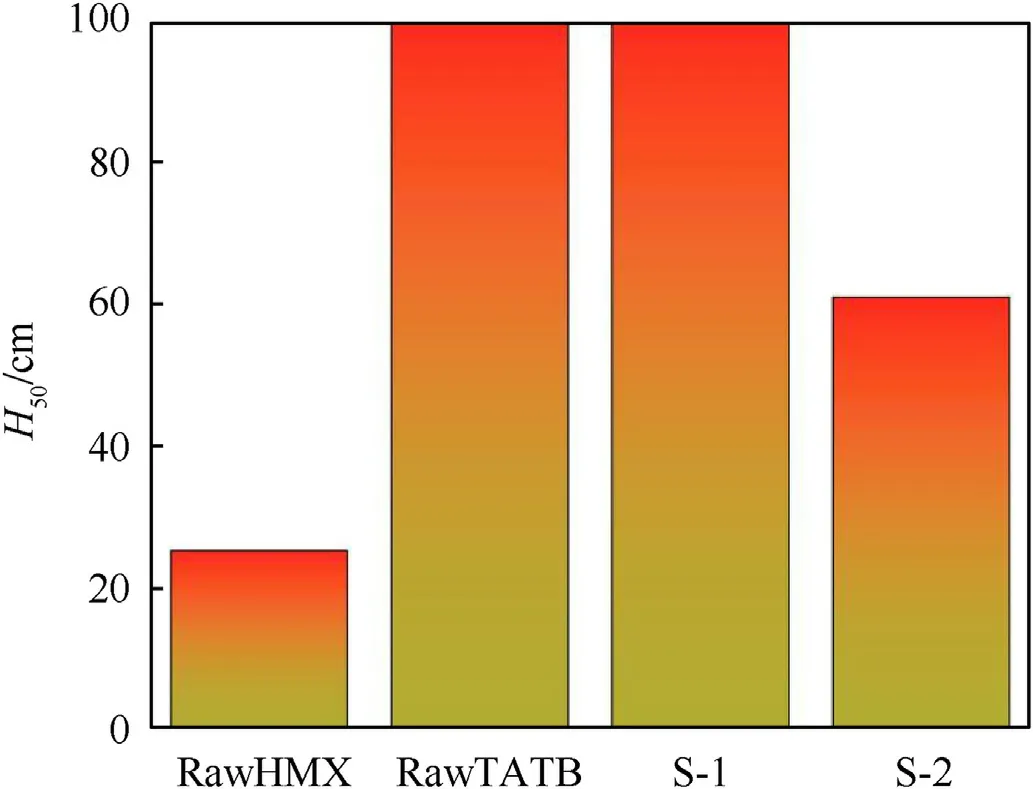
Fig.12. Impact sensitivity of raw materials and samples.
4. Conclusion
In this study, HMX/TATB microspheres were successfully prepared by the droplet microfluidic method. The morphology of HMX/TATB coated with two typical binders was studied. The microspheres prepared with 1 wt% NC, 4 wt% GAP composite binder have a regular spherical morphology with an average roundness of 0.929. At the same time, the effects of dispersed phase concentration and continuous phase flow rate on the preparation conditions were fully studied. Among them, the D50of the microspheres prepared with a dispersed-phase concentration of 75 and 25 g/L is 63.69 and 47.46 μm, and the spans are 0.24 and 0.36, respectively.When the continuous phase flow is 1.3,1.6,and 1.9 mL/min,the D50of the prepared microspheres is 40.26,35.51,and 33.68 μm,and the spans are 0.37, 0.37, and 0.35, respectively. The data show that the microspheres have regular spherical shape, narrow particle size distribution, and excellent repeatability and consistency. Under optimized process conditions, HMX/TATB microspheres were prepared and compared with the traditional mechanical stirring method to prepare samples. The XRD, DSC, fluidity, bulk density,and mechanical sensitivity of the samples were studied.The results show that the crystal form of HMX/TATB microspheres remains unchanged, and the binder maintains good compatibility with explosives. Furthermore, the fluidity, bulk density, real density and H50of HMX/TATB microspheres are significantly improved(microfluidic method vs. mechanical stirring method; angle of repose, 25.7°vs. 40.5°; bulk density, 0.729 g/cm3vs. 0.538 g/cm3;real density,1.925 g/cm3vs.1.641 g/cm3;characteristic drop height,greater than 100 cm vs. 60.9 cm). These results indicated that the droplet microfluidic spheroidizing technology could effectively improved the charging,pressing and safety performances of HMX/TATB. All the research results not only provide a new way for the preparation of spherical composite explosives, but also provide experimental theoretical reference for similar polymer coated explosive systems.
Declaration of competing interest
The authors declare that they have no known competing financial interests or personal relationships that could have appeared to influence the work reported in this paper.
Acknowledgements
The project was supported by the National Natural Science Foundation of China (No.22005275), Scientific and Technological Innovation Programs of Higher Education Institutions in Shanxi(STIP,No.2019L0584),and the Advantage Disciplines Climbing Plan of Shanxi Province.
Appendix A. Supplementary data
Supplementary data to this article can be found online at https://doi.org/10.1016/j.dt.2021.11.004.
- Defence Technology的其它文章
- Trans-scale study on the thermal response and initiation of ternary fluoropolymer-matrix reactive materials under shock loading
- An improved SLAM based on RK-VIF: Vision and inertial information fusion via Runge-Kutta method
- Shock response of cyclotetramethylene tetranitramine (HMX) single crystal at elevated temperatures
- A super resolution target separation and reconstruction approach for single channel sar against deceptive jamming
- Camouflaged people detection based on a semi-supervised search identification network
- Angular disturbance prediction for countermeasure launcher in active protection system of moving armored vehicle based on an ensemble learning method

